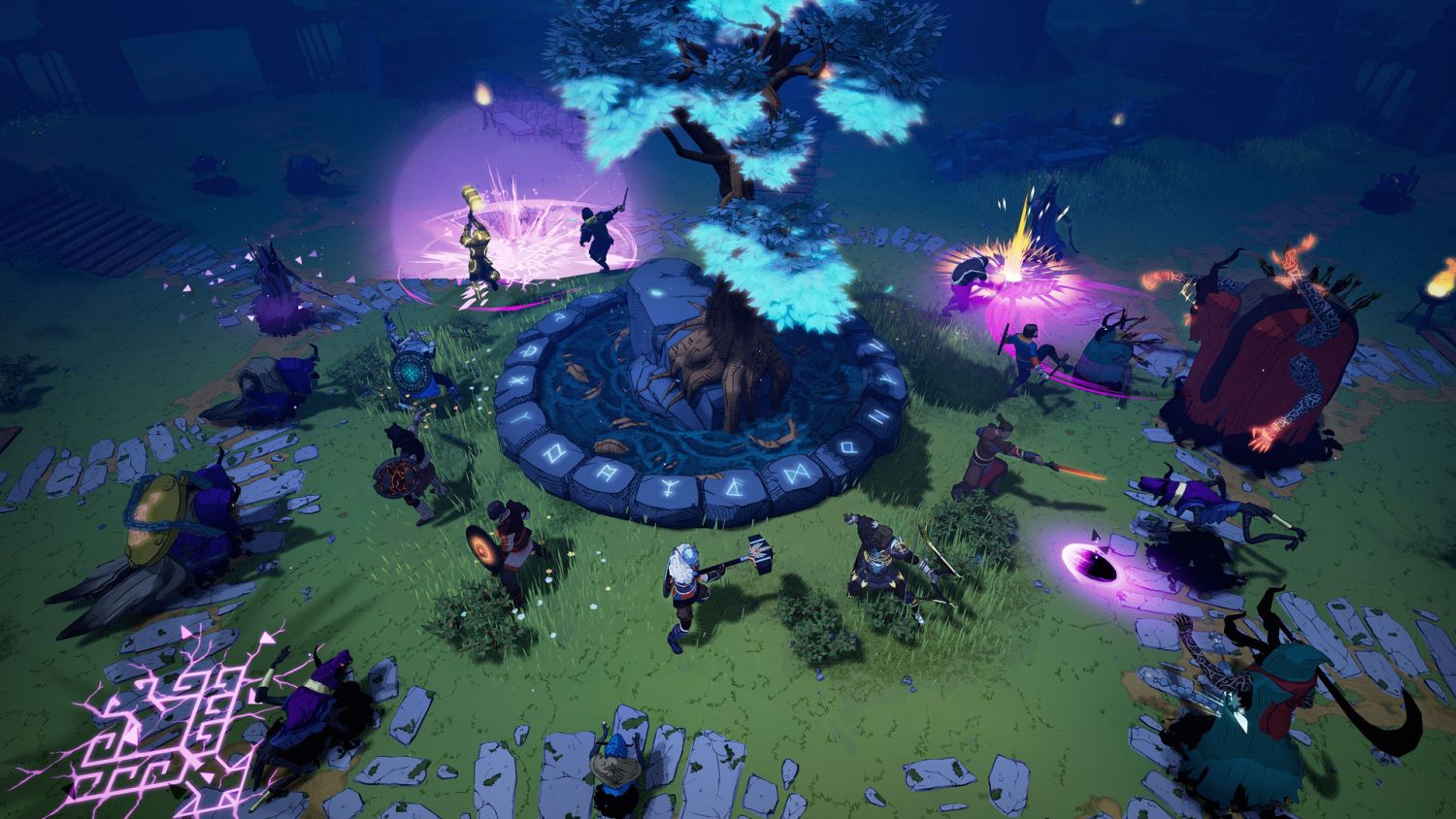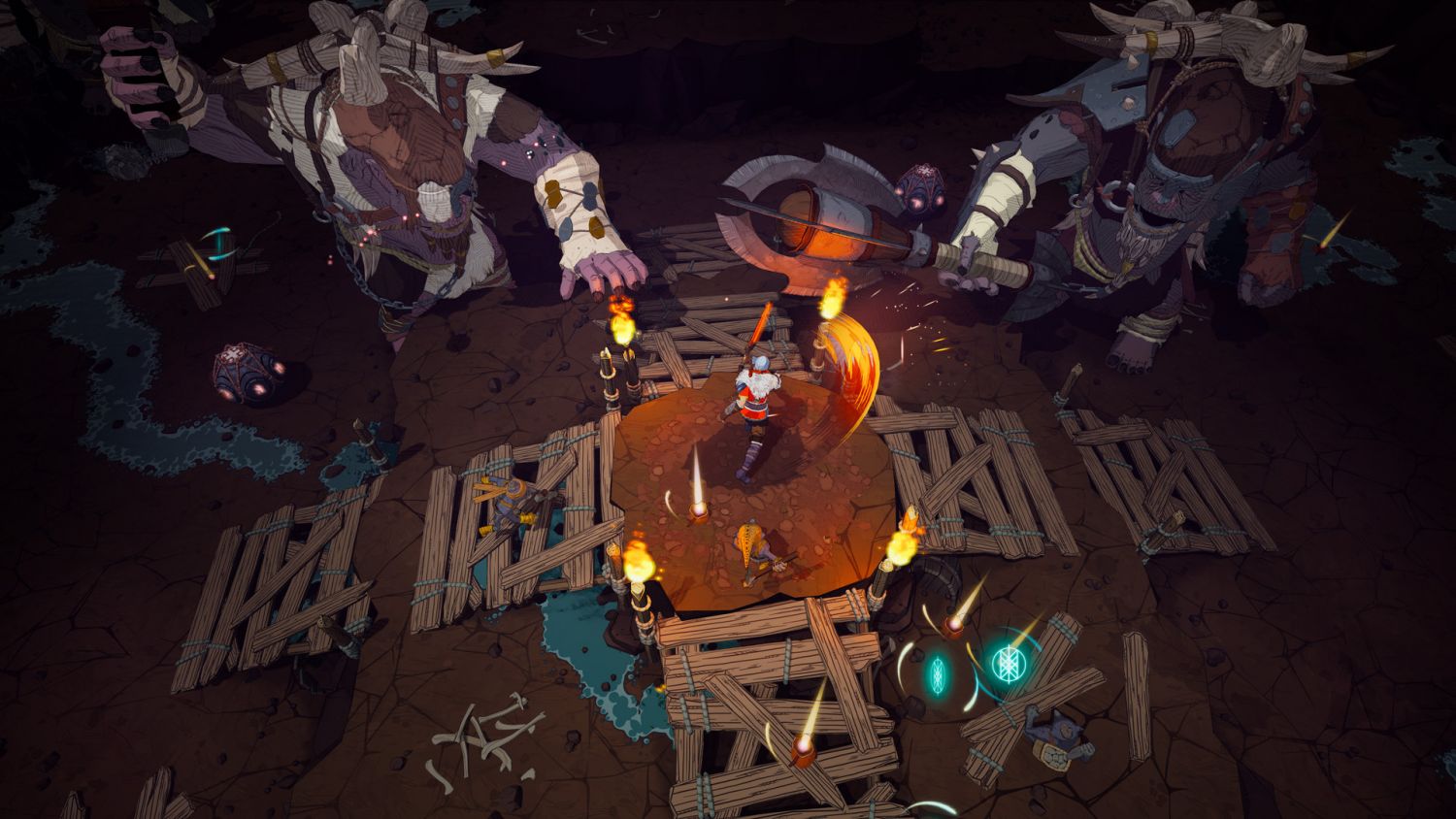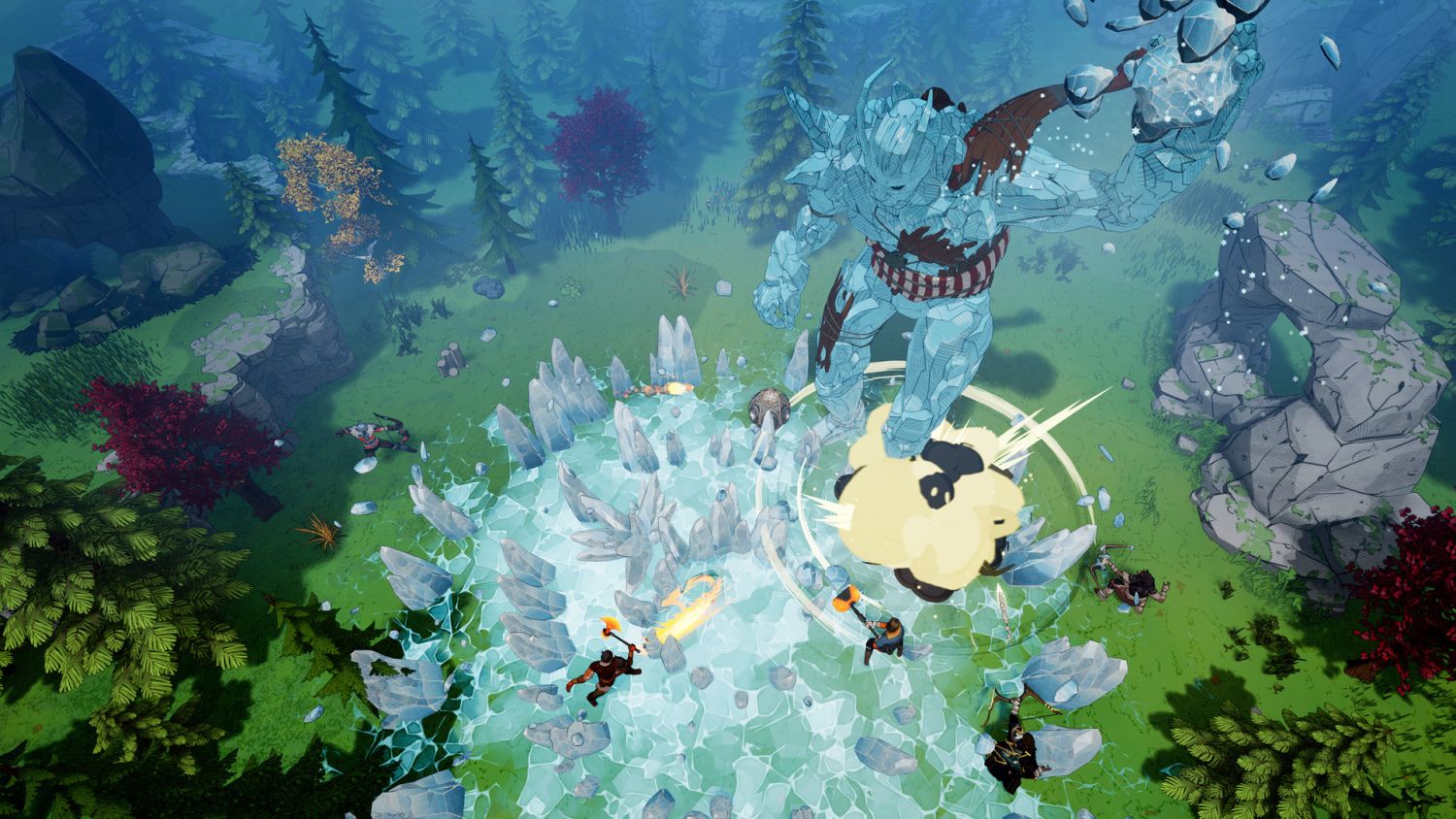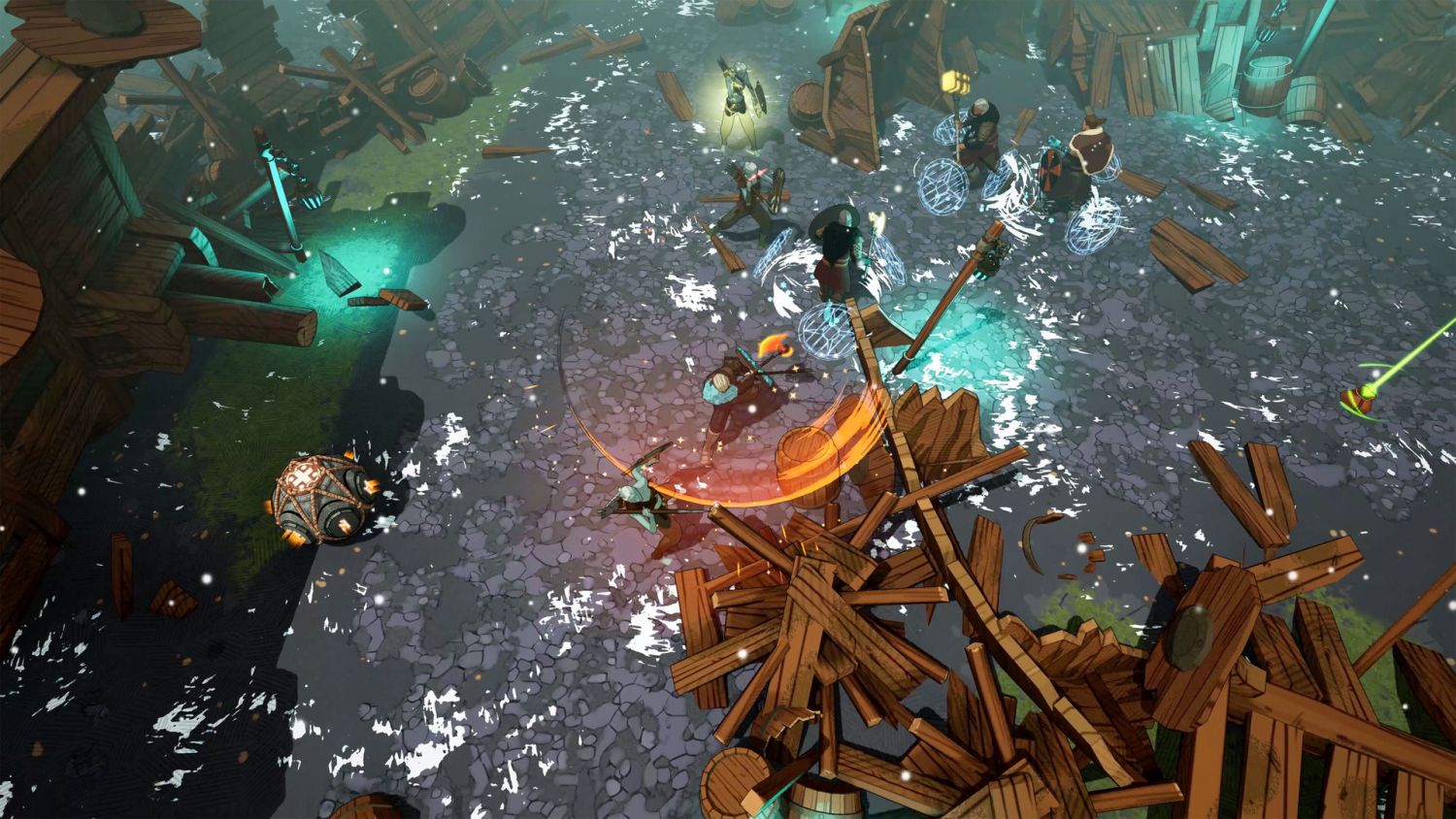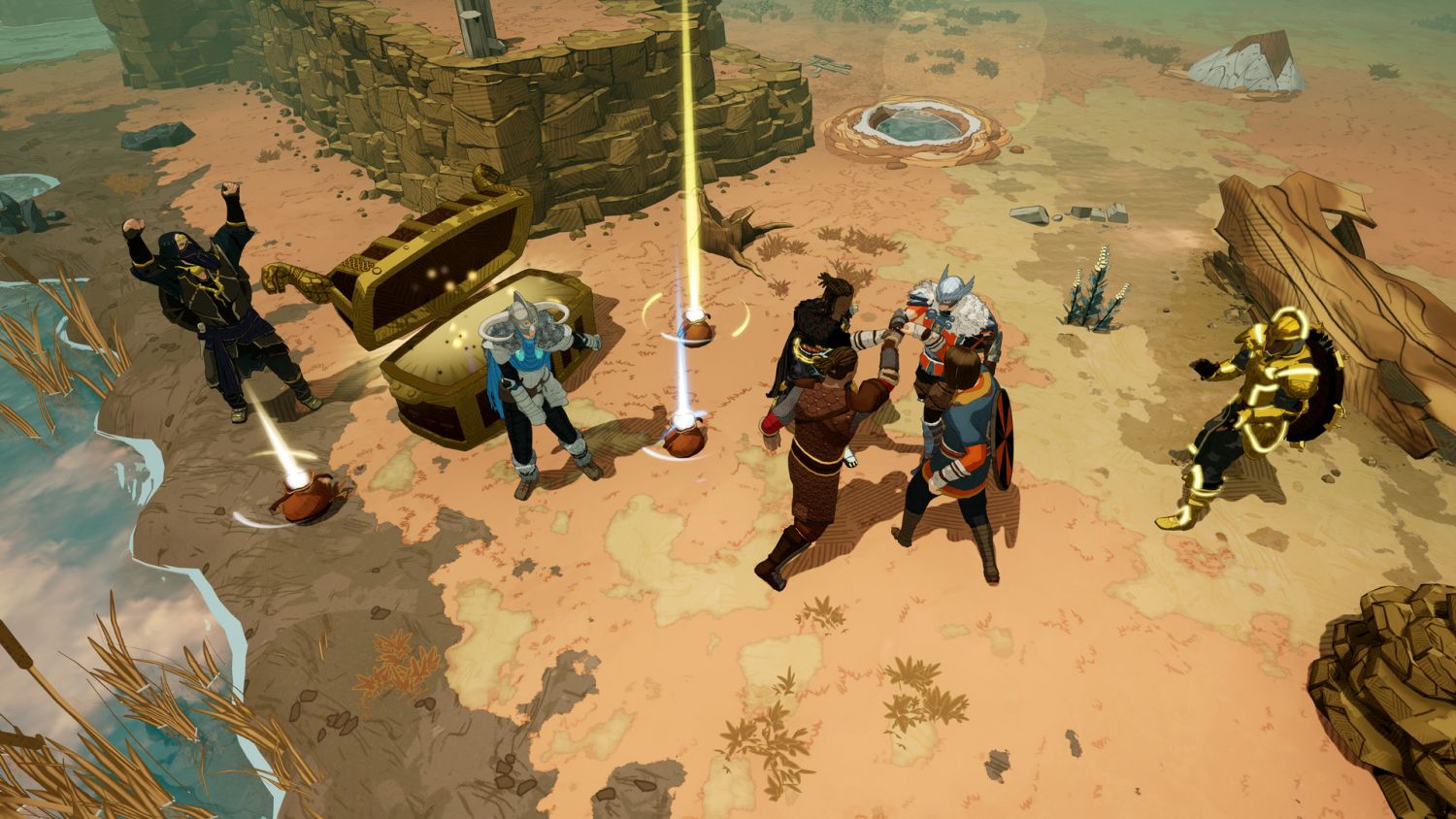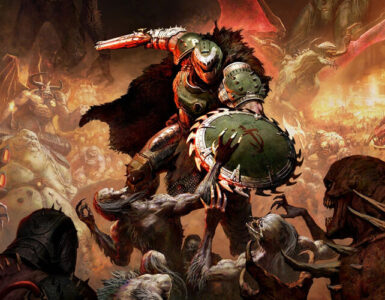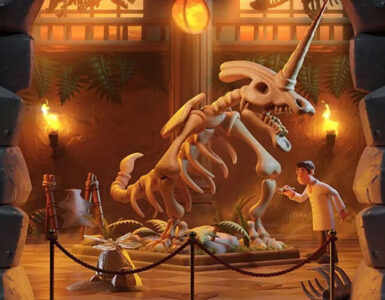Survival games have certainly carved out a neat niche for themselves, and a cursory glance across the different gaming platforms reveals a swathe of similar titles available for players to enjoy. Amidst all the competition, it can be hard to stand out, but developer Norsefell is attempting to do just that with Tribes of Midgard, with co-op as a prominent piece of the puzzle.
Sadly, it does fall agonising short on many other fronts, even if there is definitely merit to the composition of the game. Players are dropped into randomised worlds as their custom Einherjar, warriors of Odin sent down from Valhalla to defend villages from the onslaught of the Jotunns. These giants have only one aim, and that is to bring down the Tree of Yggdrasil, triggering Ragnarok. With such a rich history to tap on, the lack of lore development is perhaps the first sign of trouble for Tribes of Midgard.
The lack of a narrative drive may not always be a dealbreaker, but it requires a strong gameplay foundation to see things through. Tribes of Midgard definitely tries its hardest in providing players with the tools for success, even if it is hardly sufficient once you really dive deeper into the game.
The tutorial teaches players about the basics of crafting, exploration, and combat, which is useful for the beginning 10 minutes or so. Once you throw in more complex systems like building structures, different biomes and enemies to contend with, upgrading and collecting gear, and more, it becomes an overwhelming list of things to keep track of.
A degree of fun can be had by allowing players to explore and experiment with things, but that is largely contingent on not putting too much pressure on players, be it the ever-approaching Jotunn, or the coming of the night that brings about dangerous creatures that can wreck your town and your progress.
This problem presents itself both in Saga and Survival mode. The former lets players tough it out for 100 days, completing objectives and progressing before time runs out, while the latter is an endless game mode that tests your endurance and how long you can hold out against the threats.
Cutting your teeth in Saga mode is the best way to go about experiencing what Tribes of Midgard has to offer. Starting from scratch, you must collect resources and work your way up from basic tools to arming yourself and reinforcing your village for the horrors of the night. Along the way, you will accrue Souls as well, which is invaluable when it comes to different upgrades, repairs, or even healing the Tree of Yggdrasil.
Each day has a limited window for you to do things, and it is entirely up to you how you want to go about your business in Tribes of Midgard. Players could be hunting down enemy combatants around the world, or collecting resources by cutting down trees and mining precious stones, with the village acting as the hub where you can develop more ways of interacting with the world.
Once night falls, Tribes of Midgard transforms into a defensive affair, charging you and your companions to defend the central tree from monsters until the sun rises again. Combat is not exactly a strong suit of this game, with very little required other than constantly executing your basic attacks. The majority of enemies will fall this way, and only a few require a little more thinking on the strategic side of things.
Weapons themselves are not spectacular or that varied either, with only the bow being a significantly different way of fighting. Like a good roguelite, should you fall, you are going to lose all your Souls and resources. You can recover those by making your way to the body, that is, if you can survive the treacherous trek.
Of course, the Jotunns are the ultimate threat, and you only have limited time to prepare. These giants are hardy, dangerous with their different attacks, and can bring down a village that is ill-prepared in just a few seconds. Ideally, you will want to have a party to deal with this threat, which constitutes another major issue for Tribes of Midgard.
Technically, getting together with other players is an easy task, with matchmaking almost always instantaneous. The more players you have in any given game, Tribes of Midgard ups the challenge with its scaling of XP. While that is generally acceptable, the way cooperation works needs to be refined.
When everyone is working together to upgrade the village for common buffs and benefits, the camaraderie is there for all to see. However, once you need to upgrade or repair your equipment, it becomes all about the individual. With higher-level gear required to survive the later stages of the Saga mode, players tend to hoard resources rather than share them, which becomes a huge problem if you fall behind.
The class system in Tribes of Midgard also tends to favour those with friends and family to back them up. Being able to complement each other and get up to different things at the same time always make for a more fun session in the game, but that is not always possible. If you are playing solo, the cards are stacked further against you.
The inclusion of a battle pass system does help somewhat, with increasing rewards aimed to make your life a little better on the next run. Yet, that is predicated on the expectation that players put in even more hours into a less-than-stellar experience.
Tribes of Midgard is by no means a trainwreck in this expanding genre, with an art style and music that are generally great for long play sessions. However, it is in need of refinement both major and minor in order to reach the next level. Players can still have fun in the game, but doing so without the unnecessary frustrations of imperfect systems or not being able to enjoy the game fully solo will be arriving in the true Valhalla.
Tribes of Midgard is available on the PSN Store for $27.90, and distributed by Soft Source Games.
GEEK REVIEW SCORE
Summary
An excellent concept held back by poor execution, Tribes of Midgard is not the godsend it is supposed to be.
Overall
6.8/10-
Gameplay - 7/10
7/10
-
Story - 6/10
6/10
-
Presentation - 7/10
7/10
-
Value - 7/10
7/10


